Here at Pinkbike, we get inundated with all kinds of questions, ranging from the basic "Can I have stickers?" to more in-depth, soul-searching types of queries like if you should pop the question or what to name your first child. Ask Pinkbike is an occasional column where we'll be hand-picking and answering questions that have been keeping readers up at night, although we'll likely steer clear of those last two and keep it more tech-oriented.
Ohlins air shock for a YT Izzo for the BC bike race?Question: @Yet1man asks via PB Mail:
I'm looking at the possibility of changing the rear shock on my YT Izzo to the Ohlins TTX air. How do you find it performs on the Izzo?
I'm not looking at turning the Izzo into a mini Enduro rig, just looking at upping its range of usability slightly. One other reason for changing the rear shock is I'd like to ditch the grip shift lockout. I'm looking at using this bike for the BC Bike Race next year, so need to retain its eagerness to climb, but need the bike to be burly enough to ride Squamish, Vancouver's North Shore, etc. | As well as reviewing an Ohlins TTX2 air shock on my Privateer 161, Ohlins sent me a YT Izzo to review their RXF 34 fork which was also fitted with an Ohlins' TTX1 air shock. The TTX1 has a smaller volume air can and so is more progressive than the TTX2, which, combined with the Izzo's kinematics, meant I had to fit the smallest volume spacer to get all the travel without too much sag.
As with the TTX2 I reviewed, the TTX1 on the Izzo has a very usable range of adjustment, which makes it possible to fine-tune the damping feel in a meaningful way, but without it becoming over-complicated; the scope to get the setup really wrong is less than it is with some shocks. I was able to get a setup I was happy with, running 28% sag, the high-speed compression in the firmer setting and the low-speed compression near the middle.
On the other hand, the shock fitted to a bike by a manufacturer is usually selected for a reason, and they usually go through several different tunes with the suspension manufacturer to find what works best for the bike. So in general, swapping shocks isn't something I'd recommend lightly.
Based on your comment about the twist-grip lockout I'm assuming you have one of the first-generation ones with the Fox DPS shock. While I haven't ridden the Izzo with that damper, Dan Roberts was impressed with the performance in his review, and I'm not sure how much better it would descend with the Ohlins. At the end of the day, the less travel you have the lower the ceiling for potential performance in terms of sensitivity, traction and bump absorption. While you might be able to get it to handle gnarly terrain in a way that's slightly more to your tastes using the extra adjusters, given there's only 120 mm of movement to optimise I don't think it's going to change your world.
Besides, what struck me most about the Izzo with the TTX1 was how mediocre the pedalling efficiency was for the travel. I was regularly reaching for the climb switch, and if I was going to do a multi-day race, a lockout is not something I would want to forgo. I realise that the twist-grip remote is ergonomically awful, but have you considered swapping to an under-bar remote like this Fox-compatible one from DT Dwiss and a normal grip?
|
SRAM AXS clutch issues?Question: @Mikelb01 asks in PB messages:
Have you ever had an issue with Sram AXS rear derailleurs and the clutch for the cage not being strong enough and the bike having a lot of chain slap? I've had a few of these rear derailleurs now and after a short few months of riding the rear derailleur's clutch mechanism seems to lose tension | It's certainly true that the ability to adjust the clutch force is a feature many of us would like to see from SRAM derailleurs. Especially as the chain and chainring start to wear, it would be nice to increase the amount of clutch force to ward-off chain derailment.
In his review of SRAM GX Eagle AXS, Mike Kazimer noted that "I do think the main clutch tension could be increased a little. I never dropped a chain, but I did notice a fair amount of chain slap noise when riding through rough terrain, or after a larger impact".
It's worth noting, however, that a firmer clutch can result in clunkier downshifts, requiring more force at the shifter paddle. In the case of electronic shifting, a firmer clutch increases battery consumption for the same reason, according to SRAM. Firm cutches may also increase drivetrain friction and reduce suspension sensitivity, albeit very slightly, so there are good reasons not to go crazy with the clutch force. If you're experiencing chain noise but not dropped chains, perhaps rubber frame protection is a better solution.
As for the crux of your question: is the cage clutch less forceful on AXS derailleurs than their mechanical counterparts and does the clutch force drop off with use? This is something several Pinkbike editors have wondered about so I reached out to SRAM for comment and this is what they had to say:
|
 | Your reader could be picking up on the cable and hosing putting an anti-rotational load into a mechanical derailleur which could reduce ‘chain slap’ but has no impact on shift performance or chain retention. There is no difference between the AXS and Mechanical RD that would lead to a ‘lighter feeling clutch’... Our warranty data does not show changes in clutch force resulting in SRAM RDs reducing their shift performance or dropping chains over time. We have the most robust customer service in the industry and if riders feel they are experiencing chain dropping or poor shifting issues they should reach out to their dealer or SRAM Rider Support.—SRAM |
Does the mounting position of the caliper around the axle matter?Question: Guillaume asks via email: Does the angular position of the caliper around the axle matter? Sure it matters if it's placed on the chainstay or seatstay, but does the angular position around the axle matter if it's placed on the same frame member?
Some say yes, some no. Those that say yes think that it's placed in front of the axle to push the wheel down and that if it were placed behind the axle it would push the wheel up, as in
this explanation.
 | Thanks for sending this over. That's a good article you linked, but unlike the author, I think the angular position of the caliper on the disc does not affect suspension behaviour.
Of course, it definitely matters whether the caliper is mounted to the chainstay (single-pivot) or the seatstay (Horst-link or split-pivot). That's because the chainstay typically rotates more than the seatstay as the suspension compresses, and so the brake torque acts to compress the suspension more strongly if it's connected to the chainstay than the seatstay. This effect is known as anti-rise, and it explains why single-pivot-bikes generally sit lower in their travel while braking than comparable horst-link or split-pivot designs.
Take these two Mondrakers - the caliper is attached to the same frame member but at different angles relative to the axle. Does that make a difference? Spoilers: No.
But exactly where the caliper is mounted on any given frame member (seatstay or chainstay) doesn't matter. Yes, if the caliper is mounted directly in front of the axle it will apply a downwards force on the swingarm (as shown in this image from the above article), but this is cancelled out by an upwards force at the axle; whereas, if the caliper was mounted directly behind the axle (as in this diagram), it would pull up on the swingarm, but the axle would apply the same amount of force downward. (Picture spinning the wheel without the axle installed, then pull the brake - the hub will shoot out of the dropout in the opposite direction to the force applied by the caliper).
So, wherever the calliper is positioned on the swingarm, the torque it applies to the main pivot is the same, and that's what determines braking behaviour. |
Code RSC dial stuck?Question: Gene158 asks in the
All Mountain, Enduro & Cross-Country forum: I installed new Code RSC brakes on my Meta TR about a month ago. I followed the bleeding procedure correctly and the brakes were working great. About a week ago however, the contact point adjuster dial on the rear brake lever stopped working. I didn’t crash or hit it on anything, but the dial just won’t spin in either direction now. I’m not sure what the issue could be. Has anyone else encountered this issue?
 | This is a pretty common issue. The contact adjuster can get sticky and hard to turn if it's not been used for a while.
Sometimes, at least in my experience, it's easy to simply turn the dial the wrong way, into the stop limit instead of away from it. Remember that to move the bite point outwards you have to turn the dial on one lever away from you and the other towards you; that's because the levers are identical (not side-specific) but they're facing opposite directions.
SRAM’s official advice? "Absolutely DO NOT use WD-40 or other penetrating oil on your brakes, it will void the warranty. Using a petroleum-based or aerosolized oil or lubricant will contaminate your seals and the brake could stop working. The contact adjust dials can get stuck when they're turned to their limits in either direction, but if it got stuck somewhere in the middle of the adjustment, it'd probably be worthwhile to disassemble the brake and clean everything.
If the contact adjust dial is stuck at the ends of the adjustment range, just use some masterlink pliers (they fit into the grooves in the dial pretty well) and turn it gently. It should break free fairly easier with the extra leverage.”
|
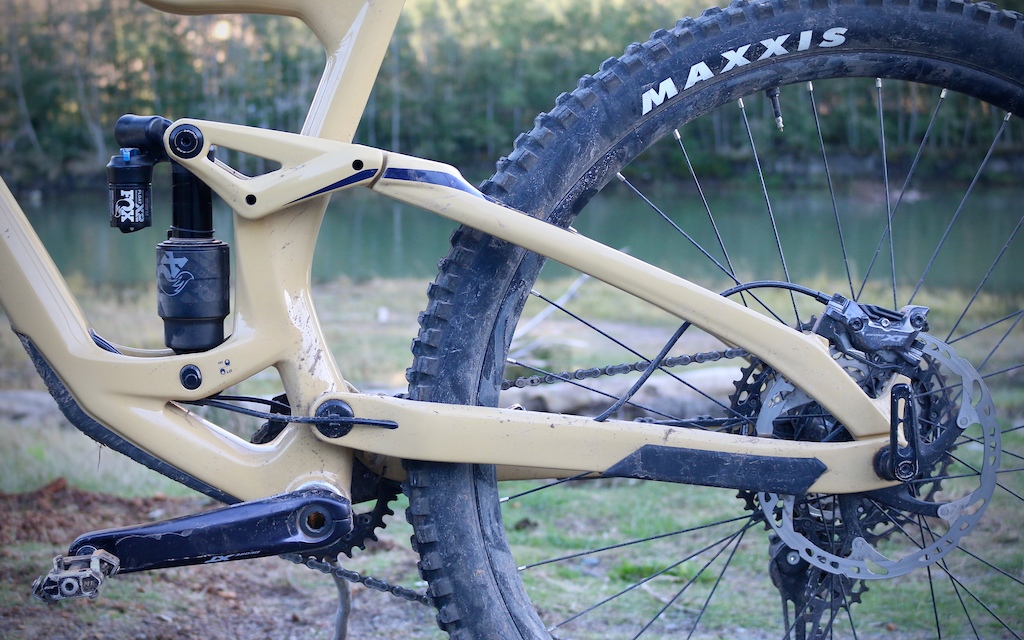

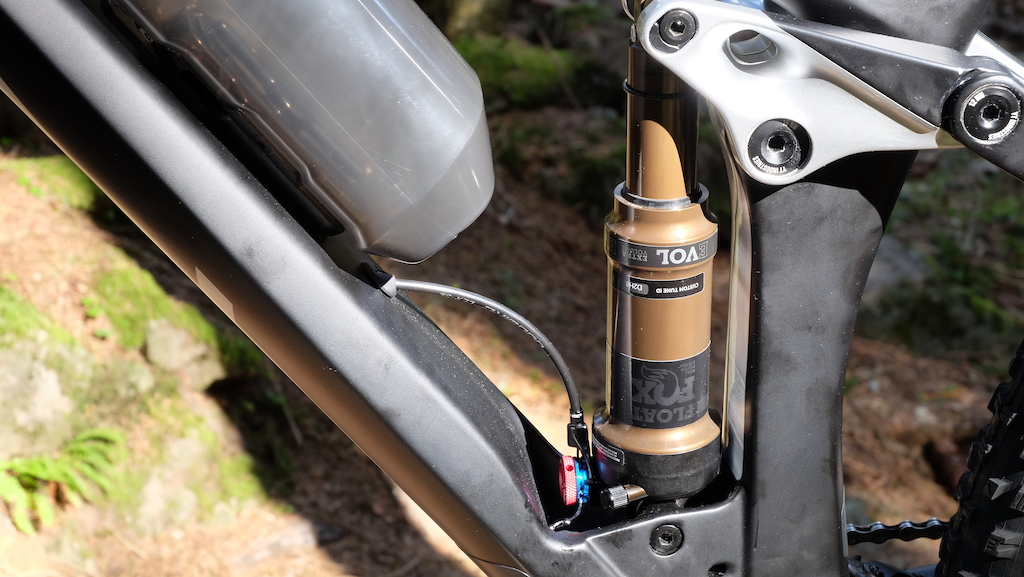
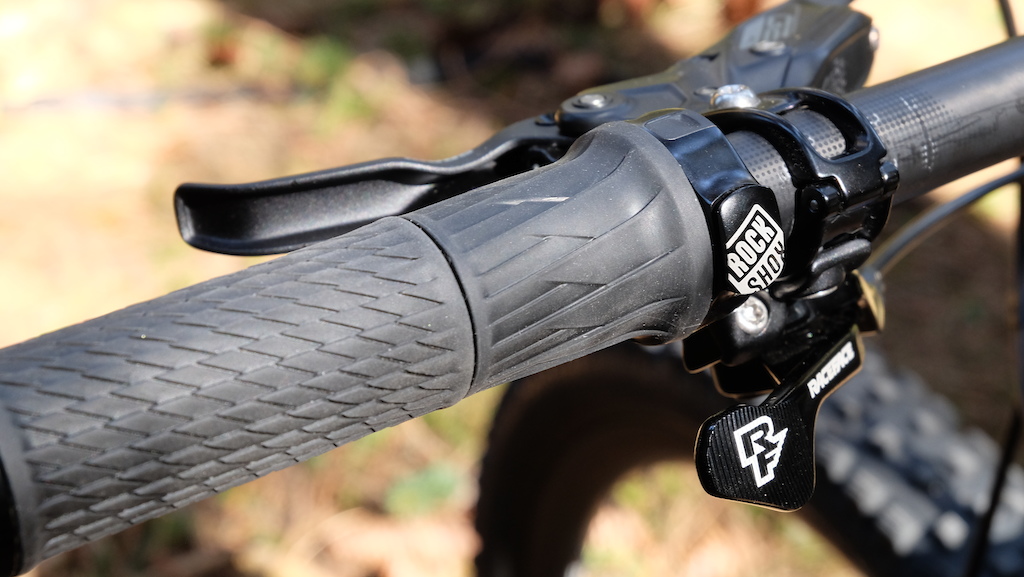
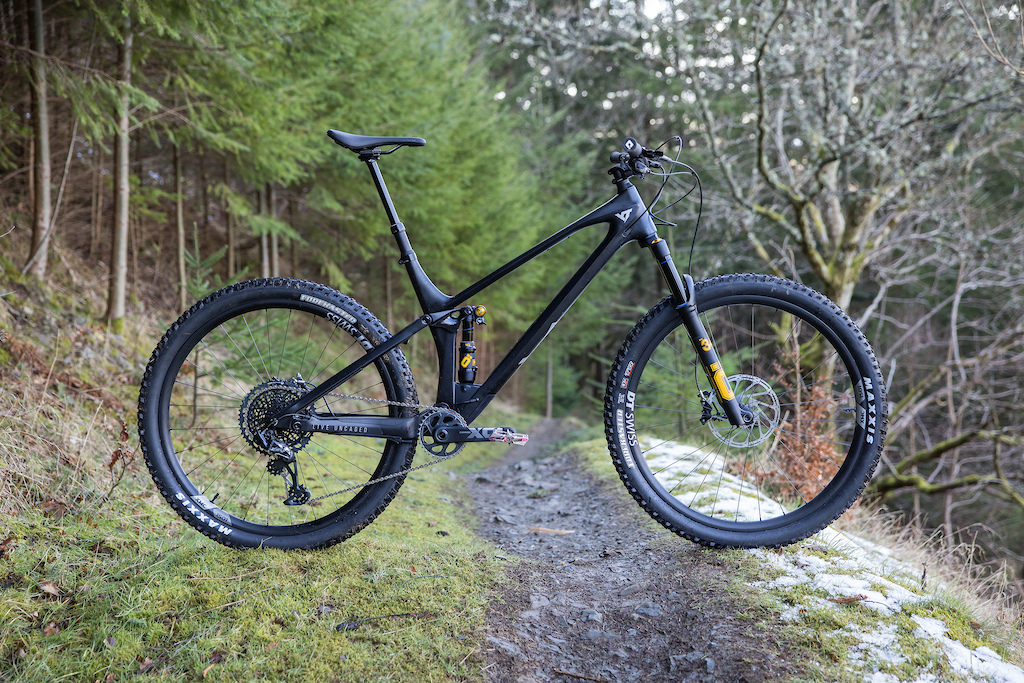

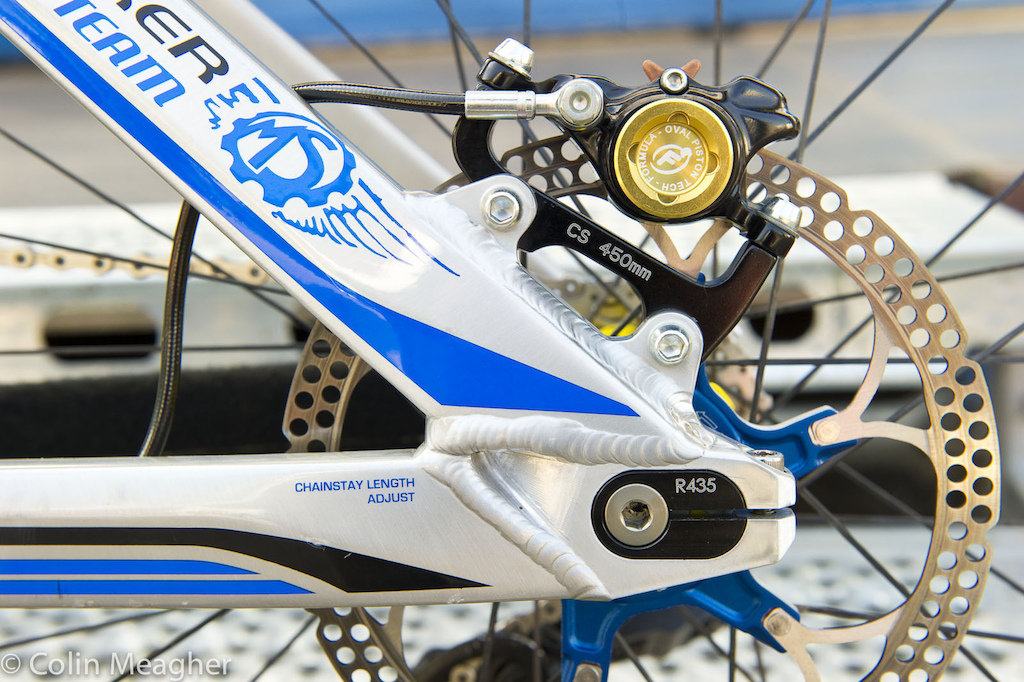

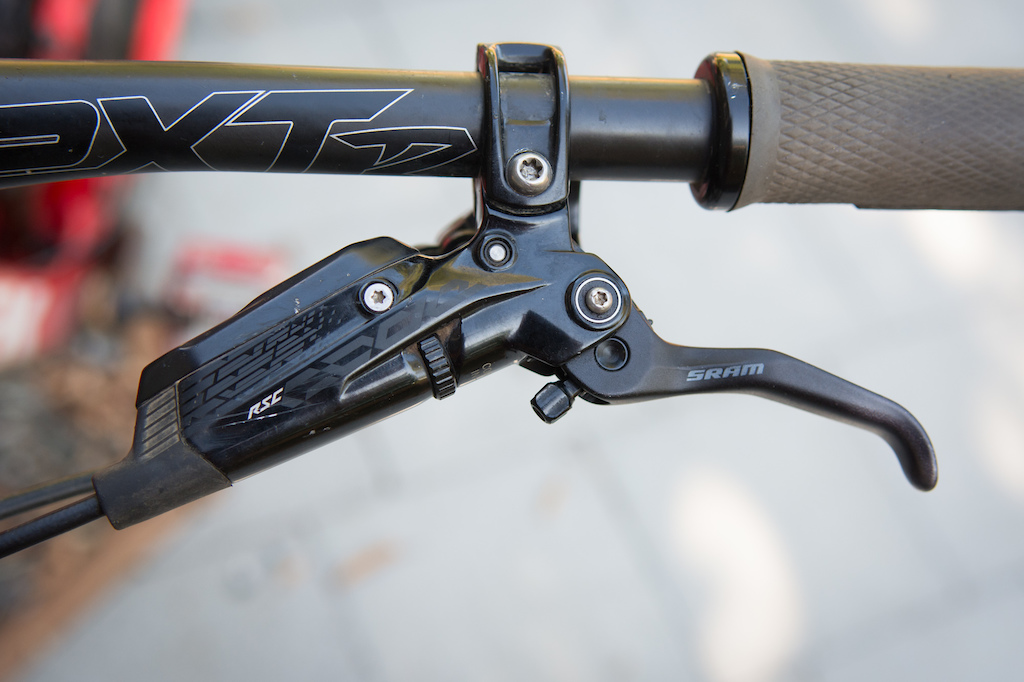

 Member since Dec 29, 2014
Member since Dec 29, 2014
Unfortunately not as robust as they used to be on this. Their brakes and droppers work now, but bushing play on new forks is an issue across the board.
Warranty claims have been slowly/reluctantly addressed. At least when the brakes were crap you got a new in box set ASAP you could flip for something reliable. Waiting weeks (or months) without a fork is kind of a deal breaker.
and testing of prototypes."
AXS shifts great but the noise and chain slap is definitely a real thing. Would gladly swap batteries more often in exchange for less noise. A standard mechanical setup would obviously solve the problem too, and this chain slap is driving me closer and closer. If I did switch back it would probably be to a Shimano setup.
Definition of first world problems though (!).
Didn’t really add anything, merely kinda crapped on AXS in general, and why you think it’s frivolous, all while replying to someone who owns the product,
Some people’s kids man…
Be sure to loctite the derailleur bolt each time it is removed and installed, either on AXS or analog sram derailleurs. Most complaints of chain skipping or poor shifting is easily resolved by tightening loose derailleurs!
www.pinkbike.com/news/review-trps-new-tr12-shifter-and-derailleur.html
Probably not the answer here but maybe some sort of adjustment in that general area could help take the added weight of the battery out of the equation. To me it seems like the whole derailleur moves around more( based on a slow motion video of the axs) than a cable operated unit and the problem might be related to the lack of a cable/housing adding stability and the added mass of the battery and motor.
As noted in SRAMs response, this likely plays a larger role than people would expect.
On the mechanical ones; there is a big torx bolt on the main lower knuckle that you need to tighten to increase the clutch resistance. Only you can't because it is pinned in place to avoid Shimano's patent on an "adjustable" clutch mechanism. But if you were to pop that pin out then you would be able to tighten the clutch up...
Hope this helps
See (finally resolved) Reverb and brake issues.
If I’m not mistaken Sram didn’t voluntarily remove the ability for the clutch to be adjusted. Shimano just patented an adjustable clutch, forcing Sram to step away from it in order to avoid a similar situation to what Rockshox is dealing with Fox on the air-bleed system.
All in all, I'm more inclined on the planned obsolescence theory
Brake master cylinder are seizing all over the place, having the 4 pistons to move equally requires a human sacrifice every tuesday.
I'd say if there is one one constant about working in the bike industry, it's the reliability with which SRAM brakes keep encountering the same issues.
(I'm afraid the only qualification I have to back that up is a BMX background)
If it’s already dickered, try fixing it.
Or send it to me, I’ll fix it, and charge you for my time and shipping.
You can’t further dicker something that’s already dickered, so get in there and see if you can fix it. You’ll feel a sense of overwhelming pride, and you can climb onto that soapbox and exclaim to the world how you went and solved something that no one else could.
www.youtube.com/watch?v=IChC4h8WDkA
Was thinking this was more the cause than the “weak” clutch.
Haven’t had the opportunity to check it out yet on someone’s bike.
Glad to know I wasn't totally off base though!
Could an alternative be to perhaps place some sound deadening material in the area where the b-tension screw contacts, or was there a reason why that was avoided?
Of note, if you can use a narrower spacer, you’d be better off, the threads on the rd don’t engage very far, and most hangers aren’t very hard alu, so you increase the risk of stripping the rd hanger.
You’re man in the video seems like he’s had a coffee or twelve, him highlighting that it acts as a second clutch was pretty funny to me.
I’d have to give it a try, but i believe that when you’re shifting into your lower range gears (larger cogs) the rd is able to swing back slightly to make that shift a little easier, I wouldn’t be surprised if there was more resistance to shifting into those larger cogs. It’s likely why the TRP system seems to require more input from your thumb to shift.
I definitely don't think it acts anything like a "second clutch". For that you'd need to precisely torque the RD down to allow it to move with resistance, which would almost guarantee the bolt would back out over time. Or get the thickness of the shim juuuuuust right, or use a compliant material for your spacer. Or something along those lines.
OTOH I also don't think it has any downsides during normal riding/shifting. The B-knuckle doesn't move while shifting up/down the cassette, at least on any RD I've ever owned. Totally agree with @onawalk about using the smallest spacer you can though - you want to make sure the threads are still fully engaged.
I suppose that a quick turn of an alien key would release any pressure and allow rotation to remove a rear wheel, although it is another step to add in when most cba!
Back to my other point - why didn't the guy just glue/attach some sound deadening material between the limit screw and the hanger? Seems a much simpler solution, and I can't see that wear would be much of an issue?
Just locking the knuckle in place is easily done, quiets things right down, and *shouldn't* really change shift feel or anything like that. If you don't take the wheel off very often then there's not much downside.
If it's stuck, try depressing the brake lever a small amount while you're trying to turn the contact point adjustor. If it still doesn't budge, remove the lever blade and SwingLink, and you can unscrew the contact point adjustor with a flat blade screwdriver.
In general, I never leave the contact point adjustor at the far limits of its range; if you hit the end of the range, go back one click. You'll find it's far less likely to get stuck.
I'm glad you shut down that article about the caliper position on the swingarm affecting anti-rise. It is a well written and competent sounding article that would have convinced a lot of people. However it is also utter bollocks, lol.
You are 100% correct, the position of the caliper in relation to the axle has absolutely no effect on the kinematics of the bike.
It's not the _amount_ of rotation, it's the direction of rotation.
On a single-pivot, the braking torque is in the same direction as the swingarm/chain-stay rotates in compression, that's why it adds to anti-rise. On a four-bar or split-pivot. with the brake on the seat-stay, the seat-stay typically rotates against the braking torque, decreasing the braking torque's effect on anti-rise.
Or just the different cage?
Thanks!
Both of them are noise city on my bikes.
The X01 and GX AXS stuff is my first Sram drivetrain stuff, ever. I remember thinking to myself for YEARS why do all of these people make chain slap and noise reduction such a priority?
Then I moved to AXS derailleurs and it became abundantly clear why.
Just don't ever apply any kind of lubricant to the adjustor... you might get the adjustor loose, but it will attract dirt, which will cause other problems.
It probably doesn't matter too much on a bicycle, given the overall weight advantage you enjoy over your bike. However, mounting calipers more centrally DOES improve "flickability" in many cases on heavier vehicles. It may very well do so for bikes, too.
And what is more desirable? Two levers? Would you like them above and below or both below?The "ergonomics" of either of those choices is much worse than the TwistLoc. (It's not a shifter, why would you call it "grip shift lockout"?)
In a nutshell, it just locks the B-tension pivot and so cuts out a bit of chain slap without affecting the actual clutch tension. Downside is the derailleur may be slightly less flexible from front on impacts, and you have to loosen the derailleur to remove the rear wheel
WD-40 is water displacement 40, originally developed to keep nuclear missiles in their NIKE silos from corroding-it's about the worst choice of wet lube that could be used-for anything.
Loctite might work-it'll keep the grit out but hold the bolt tight enough that you'll need some mechanical assistance to break it loose. Graphite powder (usually used for lock cores) provides excellent lubrication without any gummy buildup.